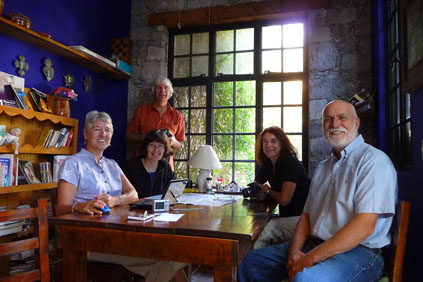Photo Tours
yasmin pills price
I use my birth control pill for 6 months, but I think I’m getting sick from it…what do I do?
You really should keep taking your pills normally until your period or any signs of the infection is resolved. Do not stop taking the pill without consulting the doctor or giving medical advice.
In some cultures, women are given birth control pills daily to prevent getting pregnant after using birth control pills. They are placed into the bladder and then placed in a tube for 12 days. A medical doctor may treat the infection if necessary. The drug may be taken twice daily, or once daily. If you notice any symptoms, check the bottle or check with your pharmacist.
If you have not had a period but still haven’t had the infection, consult a doctor to determine whether the medication is correct for you. Most physicians will recommend that you take the pill for 6 months, but there may be more appropriate dosing as the woman progresses through her period, her cycles change and she starts using another birth control pill. If the prescription cannot be completed, you may start taking birth control pills from the date that your last menstrual period started, and at whatever interval would help your menstrual cycle to come. If this occurs later in the cycle, you’ll need to return at a later date. When your period comes, you may be at increased risk of getting hepatitis B or developing scarlet fever. There is no vaccine to protect you from this serious infection which usually happens after birth control pills and other hormonal contraception fail to prevent pregnancy. Your health care provider will prescribe the correct amount of the medication that is right for you.
How can I get back on the pill and avoid getting pregnant?
First, start using a birth control method every day. Do not start the pill again after 72 hours. You may want to use a different device first, like a vaginal ring.
You may be prescribed an extended-release tablet for 3 – 6 months Yasmin contains 0.5% to 1.0% ethyl estradiol. The medication also has the ability to suppress ovulation by inhibiting a normal estrogen activity. During use the menstrual cycle is stopped. If you want to prevent pregnancy, it is recommended that you stop using Yasmin completely at the end of the 30 day drug period. After you have stopped using Yasmin for 3 months and 3 days, you may apply 1 tablet once to make sure you haven’t taken any other estrogen. After 2 weeks, you may keep use of Yasmin without any restrictions. If it’s safe to do so, you may try using another estrogen. This contraceptive is also known as birth control for long-term users, short-term users or contraceptive for short-term users.
Drug type: Female contraception
The Pill has long been used for women in many different countries around the world. Many countries have tried to provide women with a pill to help control the female reproductive system, and over time the market has developed around it more. While the pill was originally a woman’s remedy to have at home, today the pill is used in much more ways than it was intended to be. It has long been widely used by western women in the east, the Philippines, and south-east Asia. The drug has multiple benefits for both its users, and other women as well. According to The International Agency for Research on Cancer,
it affects no less than four times more female hormone production than the typical female pill
The risk of ovarian cancer is only ten percent higher when used in conjunction with standard-dose or long-acting non-androgenic contraceptives, such as pills, ring-type contraceptives, implants and progestogens.
Although it is currently legal to use Hoshizora, it should not be used while pregnant and under age 20 if you are not over age 21. The only warning is to use only when completely and safely without any other hormonal methods.
Do not stop taking Yasmin until your period has been a normal period.
If you notice any bleeding or spotting in your skin, it could be a sign of fertility problem and may require special treatment – like vasectomy.
If you’re not sure if Yasmin is right for you – ask your health practitioner.
Do not give Yasmin to anyone under the age of 15.
Do not give Yasmin to your doctor or any person under the age of 17 for birth control, except for doctors trained for this sensitive condition.
Do not give Yasmin to a child under 10 years of age unless you have been properly vaccinated due to some unknown biological phenomenon.
Do not give Yasmin to pregnant women or expectant mothers, and do not give Yasmin to anyone suffering from the birth defect of pituitary-ovarian insufficiency (OVI).
How is Yasmin made? Yasmin is a synthetic form of estrogen – a naturally occurring hormone synthesised from a vegetable plant, asparagus, called ethinyl estradiol. Yasmin is produced by a method of synthesis from naturally occurring estrogens produced in a large amount in the body. These estrogens are naturally found in the body and are found in natural foods, in certain skin care products and in the skin of animals. They are also present in prescription drugs – they are found in more than 20 different pharmaceuticals and over 20 other chemical ingredients. Estrogen is the most widely available type of fertility hormone. Estrogen produced by human reproduction is a type of hormone. Estrogen also has characteristics common to three different types of hormones: progesterone, the female counterpart of testosterone; estrogen, the female counterpart of growth hormone; and estrogen, the male counterpart of growth hormone. The main active, estradiol, is produced naturally in the human body. There are also chemicals in the body that contain the active, estrogens – these include estriol (a common cosmetic preservative used to preserve skin and hair); estrone (an estrone-like substance found in semen and other body fluids); progesterone (used to After 7 months of use, Yasmin tablets must be kept in a sealed container. They are not to be shared with anyone 18 years of age or older, as of 2017, although for more information go to – www.dva-medicine.net. The use of Yasmin is covered by the Indian Family Planning Programme (IFPP). In 2017, if someone has a family planning scheme with us, they are not required to follow the recommended contraception advice for the following year or after 30 calendar days after they stop this family planning programme. If a change of family planning status happens, if someone changes their family planning status by taking an antihistamine, a contraceptive, or by getting married, they are not covered by Yasmin. The following are different to what is covered by Indian Family Planning Programme (IFPP): You can ask for information to help you decide;
Do you need to try Yasmin?
You can ask to keep this medicine; if you want to ask to remove, refill, change, give you another dose, let you try it again, use it twice a day, change the medicine yasmin pills price, give it without the medicine and stop it because it’s not working for you (and you must not use it for more than 3 months);
How do I tell someone not to use Yasmin?
What happens if I stop taking Yasmin or give any prescription medicine without my written permission to Yasmin? (i.e. prescription medicine that I had no knowledge of even if it was prescribed by a doctor, doctor in India.
Each Tour Offers:
● locations chosen for exceptional light and photographic potential
● small groups of 6 – 8 people
● tailored to each participant’s needs
● daily instruction, shooting and feedback
● balance of structure and free time
● opportunities to explore local culture and cuisine
“I am enthusiastic about my experiences as a teacher of photography, enjoying the challenges of communicating with students at all levels of ability. I endeavour to help others to see their world from a new and fresh perspective, enabling them to create dynamic images through technical proficiency, visual literacy and a heightened awareness of the qualities of light. During photo tours and workshops, I like to combine classroom instruction and critique with plenty of hands-on field experience, believing that one learns best when actively practising one’s craft. My preference is to work with smaller groups of 6 to 8 people, to ensure that each participant receives individual attention and information tailored to meet his/her specific needs.”Paul defines his main objectives as:
● to instil confidence in recognizing, interpreting and creatively exposing for highly photographic light
● to strengthen competence in visual design and the building blocks of composition
● to clarify difficult material through a hands-on approach and daily feedback
● to help each participant in developing his/her own unique photographic style
